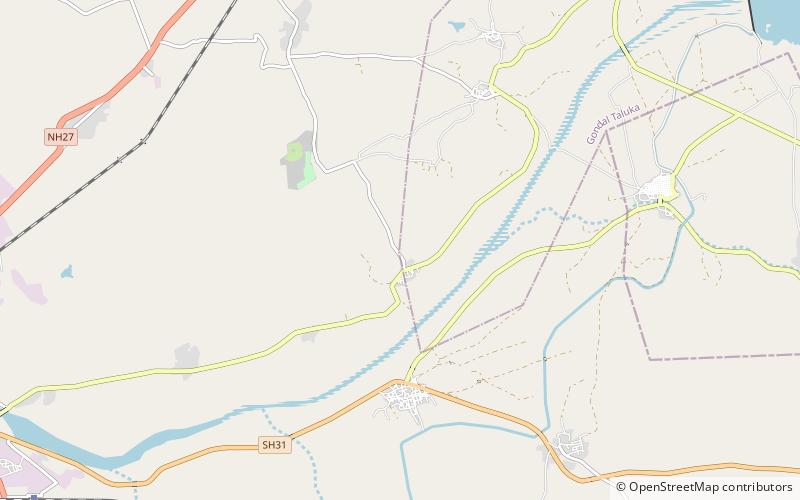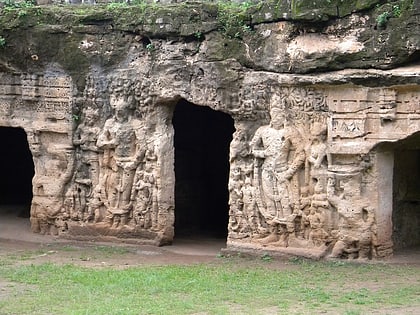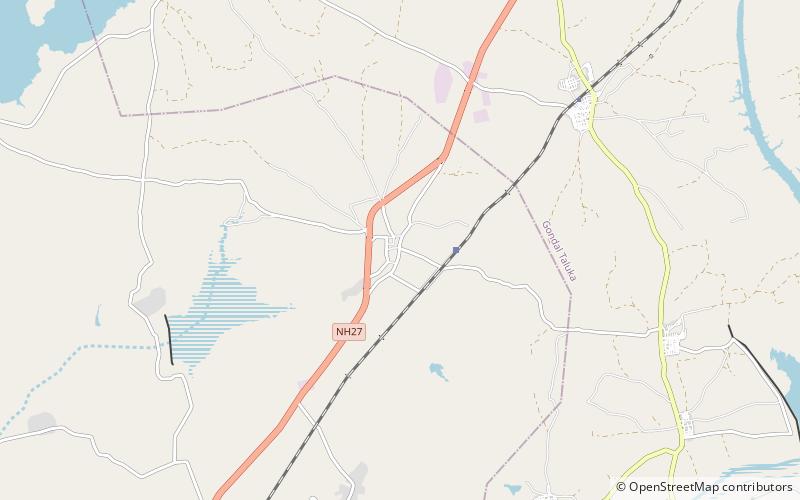Khambhalida Caves


Facts and practical information
Nestled in the serene landscapes of Gujarat, the Khambhalida Caves emerge as a testament to India's rich historical tapestry. These ancient Buddhist caves, believed to have been carved in the 4th or 5th century AD, are a remarkable example of rock-cut architecture from the era.
Situated near the town of Gondal, the Khambhalida Caves consist of a group of three main caves, each adorned with intricately carved facades and interior spaces that speak volumes of the skill and artistry of ancient Indian craftsmen. The central cave is particularly notable for its elaborate entrance flanked by two large sculptures of Bodhisattvas – Avalokiteshvara and Vajrapani.
The caves are hewn out of limestone and are attributed to the Solanki period, reflecting the spread of Buddhism in this region during that time. They provide an invaluable insight into the religious and cultural milieu of ancient India. The presence of a chaitya, or prayer hall, along with the viharas, or monk's cells, indicates that these caves served both as a monastic site and a place for communal worship.
Despite their historical significance, the Khambhalida Caves are less frequented by tourists, offering a peaceful and introspective experience for those who venture to this secluded heritage site. The caves not only serve as a silent chronicler of India's past but also as a serene retreat for those seeking solace away from the bustling city life.
Khambhalida Caves – popular in the area (distance from the attraction)
Nearby attractions include: Virpur, Rajkot district.

